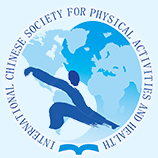Document Type
Abstract
Keywords
international student-athlete, college athletic experience, dropout factor
Publication Date
8-1-2022
Abstract
More than 20,000 international student-athletes are currently competing at the NCAA level and the numbers are expected to rise (NCAA, 2019), which illustrates the successful combination of higher education and sports in North America since the 1990s (Danylchuk & Grbac, 2016). Some studies have addressed international student-athletes’ experiences at NCAA Division I and II levels (Popp, 2007, Bentzinger, 2016, Hong, 2018), but few have investigated the Division III (DIII) level on the struggles faced by international student-athletes. Thus, the purpose of this study is to explore the experiences of former international student-athletes (ISAs) in order to gain understanding of the potential pitfalls for prospective international student-athletes (PISA) who plan to pursue college sports at NCAA DIII schools. The significance of this study is to provide suggestions for better international college athletic experiences and prevent dropout. Two former international student-athletes were recruited via purposeful sampling strategy in the Midwest, U.S. Human Subject Institute Review Board approval was granted. Data were collected through approximately 60-minute, semi-structured interviews and transcribed using Otter software. Three-dimensional inquiry model (Clandinin & Connelly, 2000) and Leisure Constraint Theory (LCT, Crane & Temple, 2015) guided this study. A non-linear process was utilized to describe, analyze and interpret the data. Two first level approaches were supplied: an inductive approach based on the LCT and a deductive open coding in-vivo. To reduce researchers bias, epoche and bracketing were employed. Applying LCT, pitfalls related to intrapersonal constraints would be negative perspectives on teams or coaches, lack of enjoyment, the mindset change of playing for school rather than for themselves and their failed expectations. For interpersonal constraints, pitfalls would be negative recruiting experiences, difficulties in adapting to cultural differences, academic challenges, and interest shift away from sports to more sustainable career development. For structural constraints, pitfalls would be less time commitment, less practice and game play, dissatisfaction with their academic programs, and lack of outside interest in their sports. To avoid pitfalls and pursue better athletic and academic international experiences, prospective international student-athletes may need to be more open-minded to adapt to the coaching and team culture and adjust to circumstances different than their expectations. They also need to study more about the recruiting process and devote greater efforts in the relationship with coaches, teammates and classmates. Lastly, they should not be in a rush to make a decision before a thorough study of institutions’ athletic and academic programs, and careers.
DOI
https://doi.org/10.18122/ijpah.1.2.21.boisestate
Recommended Citation
Wei, Ran; Liu, Yuanlong; and Gothberg, June
(2022)
"Pitfalls for Prospective International Student-Athletes Planning to Play for NCAA-DIII: Case Study,"
International Journal of Physical Activity and Health: Vol. 1:
Iss.
2, Article 21.
DOI: https://doi.org/10.18122/ijpah.1.2.21.boisestate
Available at:
https://scholarworks.boisestate.edu/ijpah/vol1/iss2/21
Included in
Exercise Science Commons, Health and Physical Education Commons, Public Health Commons, Sports Studies Commons


